Science
Frogs and Toads Together: Why do Amphibians Group Up?April 11, 2025

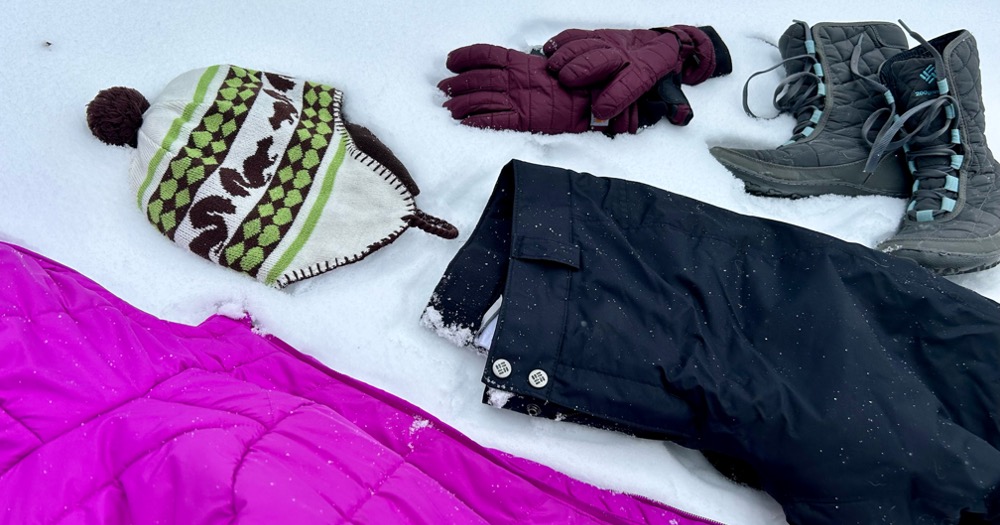
Delving into the realm of winter gear for outdoor learning, elementary teachers often find themselves facing the challenge of ensuring their students are adequately dressed for the season. This guide aims to unravel the complexities surrounding winter gear, ensuring students are well-prepared and enthusiastic about outdoor learning during the winter season.
As winter takes hold, the seasonal shift occurs because the Earth receives less direct sunlight, leading to a drop in temperatures and the onset of colder weather. This phenomenon is part of the Earth’s natural rhythm, influenced by its axial tilt. The diversity of winter experiences across the Northern Hemisphere adds an interesting dimension to this season. So what is the weather in winter?
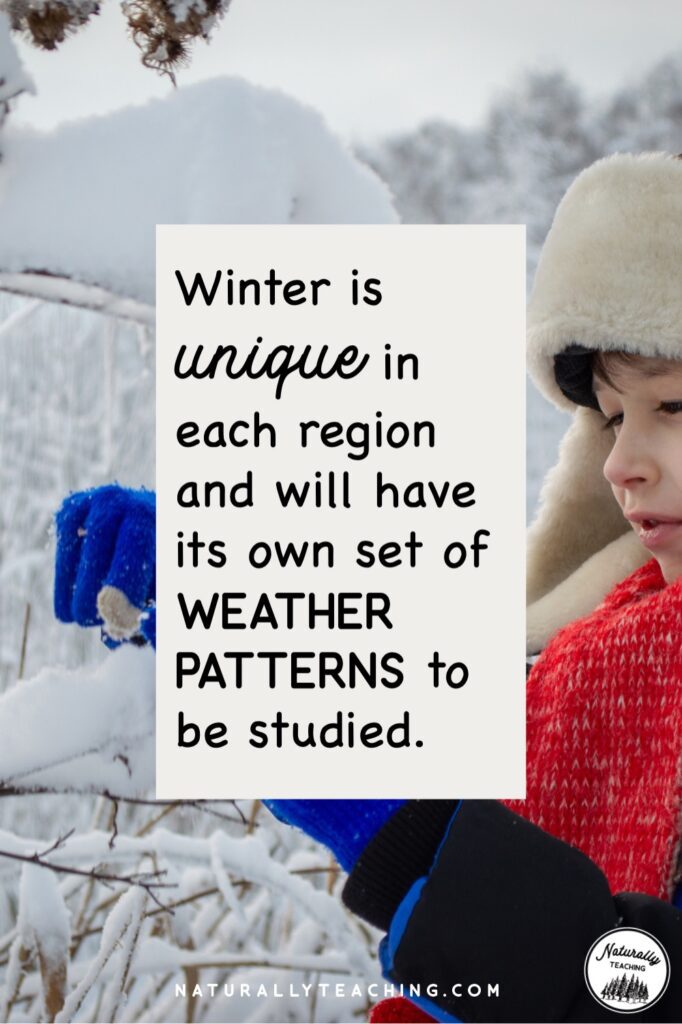
In certain regions, winter unfolds with substantial rainfall, creating a wet and cold atmosphere. On the flip side, other areas transform into a winter wonderland, draped in a pristine blanket of snow. This iconic snowy scene has become a hallmark of winter, frequently showcased in movies, art, and cultural depictions. However, it’s crucial to note that not everyone encounters snow; the winter narrative varies, with some regions embracing rain as the defining feature of the season.
Dealing with the variation in winter weather makes helping your students dress appropriately that much harder. So, what winter gear is suitable for winter learning?
Layering is key. If your students can manage layers, they can be successful outside in almost any kind of cold. For instance, when it’s hovering around freezing, a t-shirt covered by a sweatshirt, covered by a coat is a good layering technique.
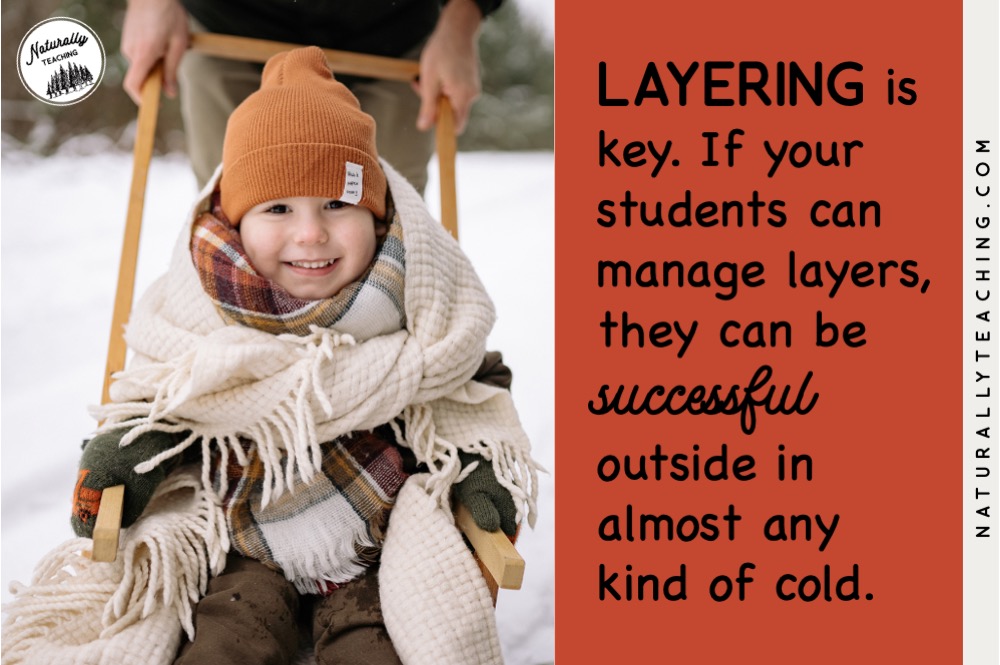
In below-freezing temperatures, layering could inclue a thermal shirt, covered by a t-shirt, covered by a sweatshirt, covered by a coat. However, not all students can afford such layering, so keep that in mind when planning outdoor learning durations.
Surprisingly, layering socks can make a significant difference in your students’ comfort. Warm feet contribute to happiness, allowing for the most successful learning opportunities.
Here are some suggestions for winter gear based on the assumption that you are in a region with snow:
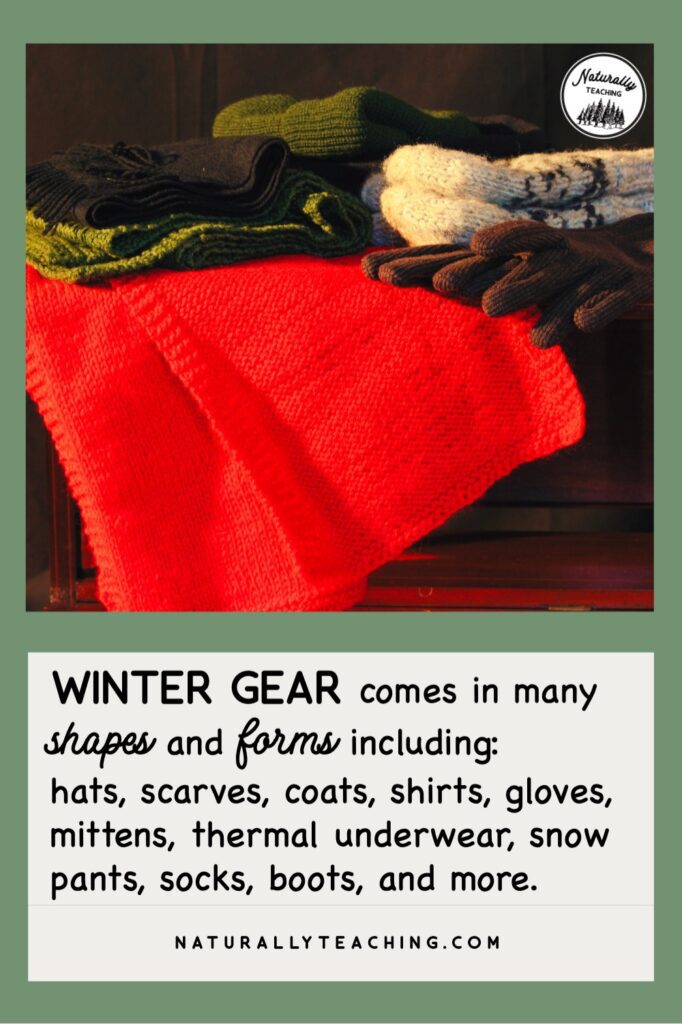
To ensure your students have the winter gear that will serve them best for winter learning, consider sending home a list of helpful gear to your students’ families in the fall. This gives them time to collect everything they need. When spring rolls around, send home a call for donations to see if you can snag some extra winter gear to keep in the classroom for next year’s students.
If you’re looking for a way to help your students understand what winter gear would be helpful for them to wear during winter learning, consider reading The Jacket I Wear in the Snow book as a class. The Jacket I Wear in the Snow by Shirley Neitzel follows a cumulative storyline similar to the song “The House That Jack Built.” Each page introduces a new article of clothing that helps keep the main character warm in the snow.
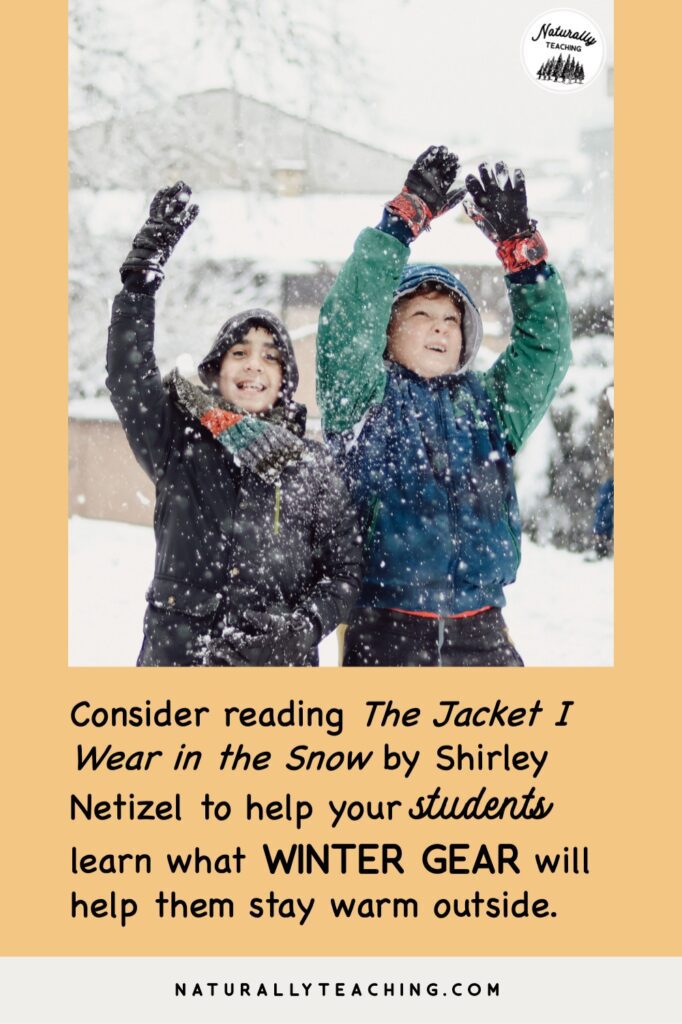
The story begins with a jacket and then adds on a scarf, a hat, mittens, a sweater, jeans, boots, long underwear, and socks. The storyline includes rhythm and rhyme to engage the readers with the character’s experience of getting dressed and undressed with winter layers.
What are some activities for The Jacket I Wear in the Snow? An outdoor activity you can put together is a retelling hike. Gather an article of clothing to match each of the pages in the book and spread them out along a trail or sidewalk.
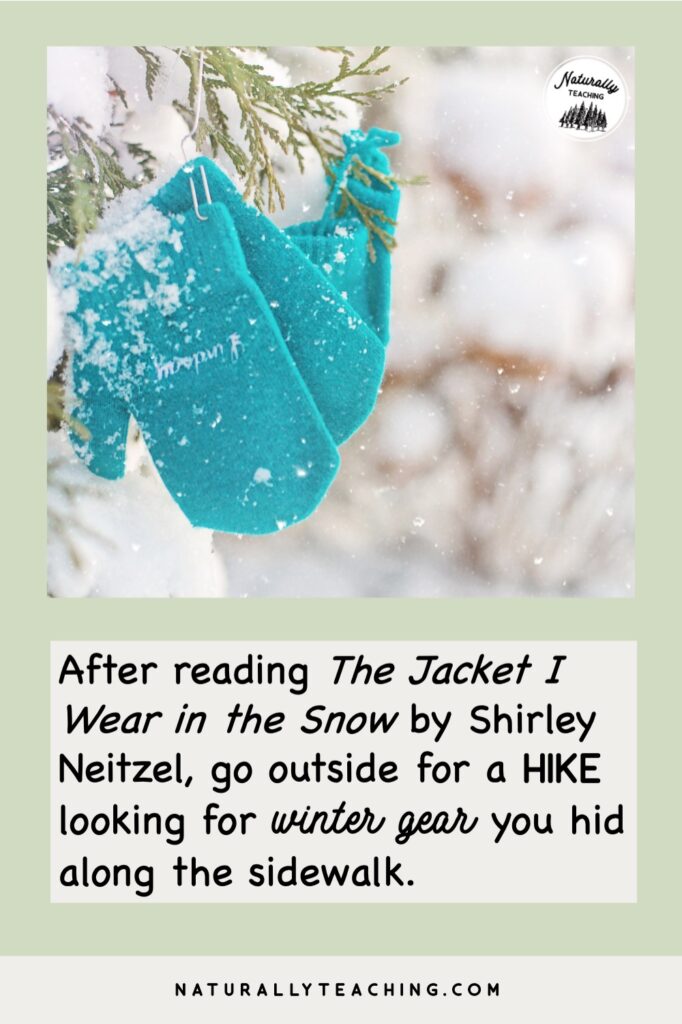
The clothing in the story included a jacket, a scarf, a hat, mittens, a sweater, jeans, boots, long underwear, and socks. You could spread these items out along the trail in order as a reminder to your students of the story. As they find the clothing, have them remind you what the main character used each article for. Alternatively, you could mix them up, and after all the clothing pieces have been gathered, work together as a class to put them in order.
Another iteration of this outdoor activity would be to put out clothing from the story as well as some other options that were not part of the story. After your students have gathered the clothing, they could sort which items were part of the story and which ones weren’t.
The Jacket I Wear in the Snow book was written in 1989, so there is room for differences in outdoor gear from that era to now. After reading the story together as a class, write a list of clothing featured in the book.
Next, have your students make a list of their gear and compare it to the story. You could do this comparison through writing or with a graphic organizer such as a Venn diagram, a bubble chart, or a T-chart.
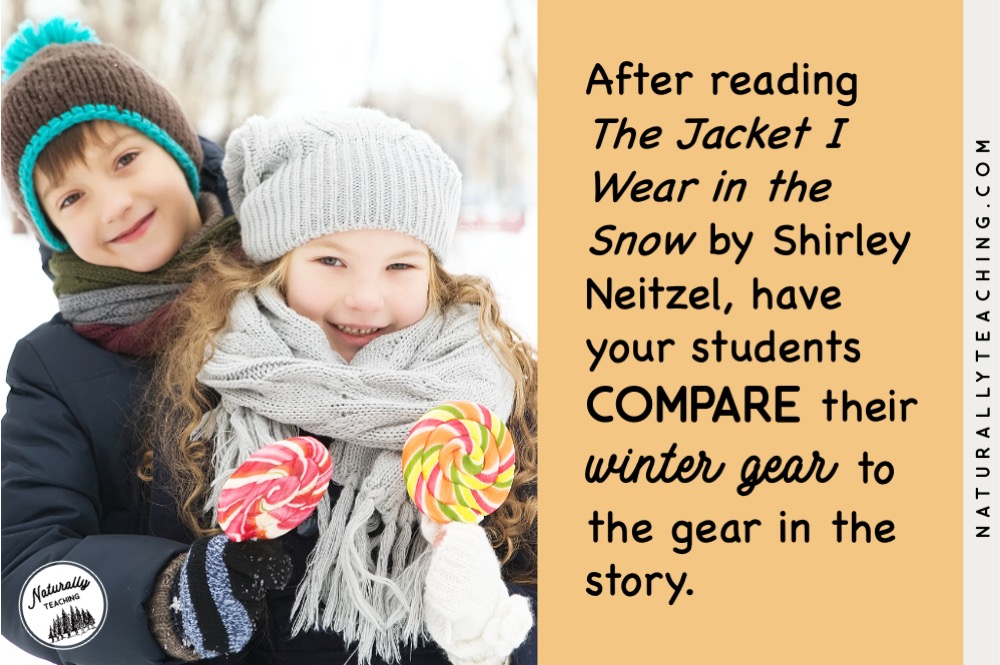
If your students are older, you could take this one step further and have them try to write their own version of the story using the gear they use outside in winter. Their goal could be to mimic the rhythm and rhyming pattern of the original story.
As we conclude this guide on winter gear for outdoor learning, reflect on the enduring impact it can have on your students’ educational journey. Educating students about proper winter gear fosters a sense of preparedness and enhances their outdoor learning experiences. By incorporating these insights into your teaching approach, you not only equip your students with essential knowledge but also create lasting memories that will resonate with them beyond the classroom. So, gear up and step into the winter season with confidence, ensuring your students are ready for enriching outdoor learning experiences!
Looking for activities to help you teach the winter season? Check out my winter seasonal resources with activities like a fall to winter sorting worksheet, a seasonal booklet, an outdoor scavenger hunt, and more!
Do you have any amazing winter gear that you suggest for elementary students this year? Describe them in the comments section to inspire a fellow elementary teacher to take action!
Check out this podcast episode for ways to set up your outdoor learning environment!
Looking for other articles about winter? Check out these other great reads:
“16 Wonderful Children’s Books About Winter For Elementary Teachers”
“How Do You Celebrate the Winter Solstice with Elementary Students?”
“A Helpful Guide to Teaching the Season Transition to Winter”
0